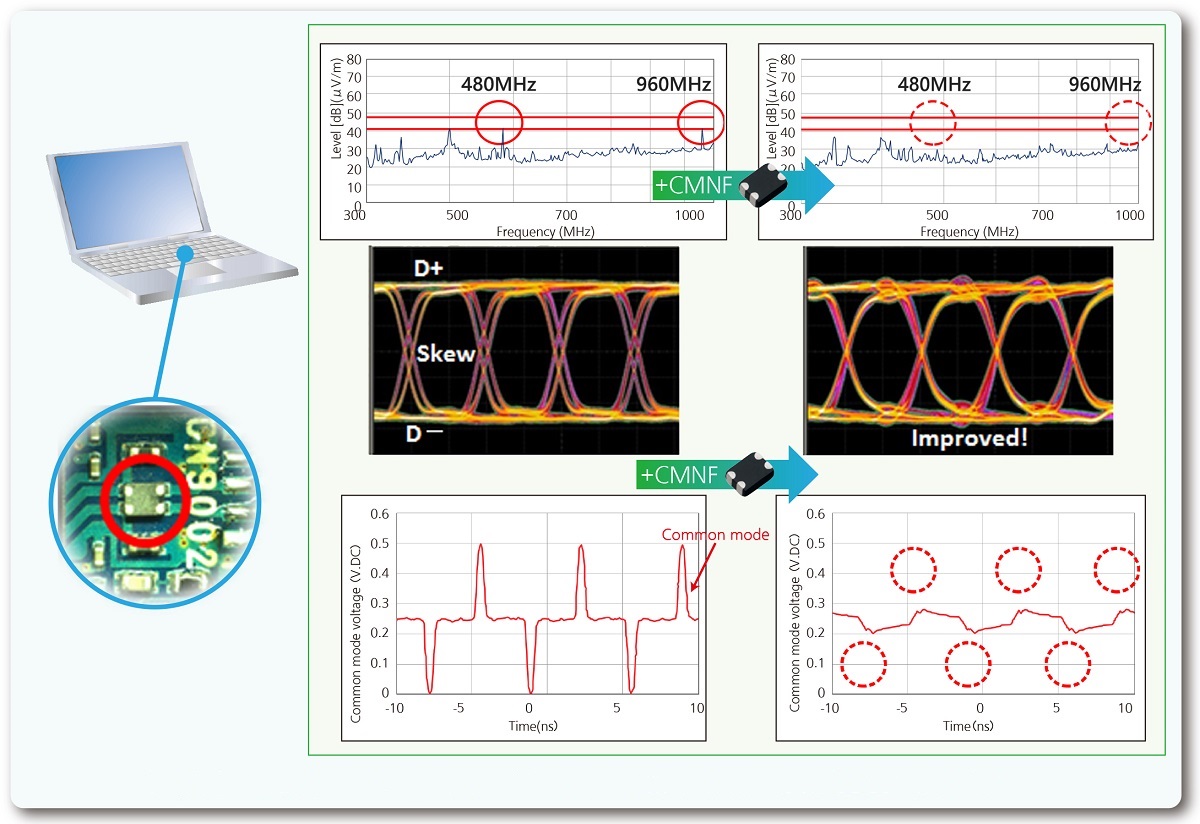④ Common mode noise suppression example
The following shows an example of common mode noise suppression using our multi-layered filter.
The figure shows the effect of suppressing the radiation noise of a USB 2.0 interface. It indicates that the harmonic noise was suppressed by using a common mode noise filter.
Common mode filters can also suppress common mode noise by reducing the skew of differential signals. The skew of differential signals generates a common mode component.
When it passes the common mode filter, impedance is enhanced. The impedance causes a delay, which reduces the skew.
As shown above, common mode filters can reduce skew caused by, for example, a transmission line wiring condition on a PCB.
Common mode filters are normally located near output connectors for the purpose of reducing skew and suppressing common mode noise at the output terminal.

⑤ Today's noise issues typified by those of smartphones
Mobile terminals, such as smartphones and tablets, have digital signal lines, such as USB and MIPI for camera and LCD control.
Their narrow housings are also equipped with cellular, Wi-Fi, Bluetooth, GPS, and other wireless communication functions.
As shown in the figure, today the transmission frequency bands of digital differential data communications are overlapping those of wireless communications. This causes noise from digital signal lines to enter antennas for wireless communications, decreasing their receiving sensitivity, which is becoming a problem.
The graph shows the results of measuring the receiving sensitivity of cellular communications when skew is generated between differential transmission lines located close to the antenna (the horizontal and vertical axes show the radio field intensity and the bit error rate respectively).
As shown in the graph, when there is no skew between differential signals, even low-intensity radio waves can be received with low bit error rates. However, as the skew becomes larger, i.e., the common mode noise increases, the receiving sensitivity decreases.
Against this backdrop, common mode filters have been widely used in smartphones and tablets recently as a measure against "autointoxication" caused by noise from digital signal lines.
When common mode filters are used for these purposes, their noise attenuation characteristics (frequency response) weigh heavily in selecting the filter type to suppress noise generated in wireless communication frequency bands.

